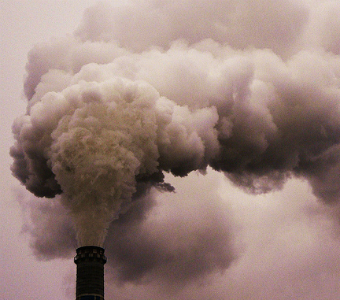Stanari power plant in Bosnia allowed to pollute 2-10 times higher than EU limits, new expert analysis shows
The pollution from EFT’s new 300 MW Stanari lignite-fired power plant in Bosnia and Herzegovina may be 2-10 times higher than EU limits allow, according to a new expert analysis commissioned by the Center for Environment from Banja Luka.
21 November 2013

The pollution from EFT’s new 300 MW Stanari lignite-fired power plant in Bosnia and Herzegovina may be 2-10 times higher than EU limits allow, according to a new expert analysis [1] commissioned by the Center for Environment from Banja Luka.
The analysis, carried out by Polish expert Dr hab. Leszek Pazderski examines the environmental permit [2] for the Stanari power plant project for compliance with four pieces of EU legislation [3] and finds that it does not comply with any of them. The pollution levels given for Stanari in its environmental permit are 2-10 times more than allowed by EU pollution legislation and 2-3 times more than allowed by EU legislation which is Bosnia and Herzegovina legislation is already obliged to implement [4].
“In 2018 new power plants in Bosnia and Herzegovina – including Stanari – will have to comply with the pollution standards in the EU Industrial Emissions Directive, so constructing any plant now that doesn’t meet these standards is pointless and will only lead to high retrofitting costs very soon”, commented Miodrag Dakic of the Center for Environment from Banja Luka.
Moreover, the analysis finds that the changes in the project made since the Environmental Permit was issued are so large that they require a new Environmental Impact Assessment. Construction of the 300 Stanari MW power plant by contractor Dongfang started this year but the project has been under development for many years, and has undergone a capacity reduction from 410 MW to 300 MW and a change of technology [5] which results in increase of SO2 emissions and lower thermal efficiency.
“Costly mistakes such as those made in the permitting process for Stanari must be avoided in future plants such as Ugljevik III, for which a concession agreement is shortly expected to be signed”, adds Igor Kalaba of the Center for Environment. “However the Environmental Impact Assessment shows that the plant’s efficiency level is not expected to be in line with EU Best Available Techniques requirements and fails to give exact expected emissions for the chosen technology.” [6]
For more information, contact:
Igor Kalaba, Center for Environment, Banja Luka
igor.kalaba at czzs.org
Tel.: +387 65860796
Pippa Gallop, CEE Bankwatch Network
pippa.gallop at bankwatch.org
Tel.: +385 99 755 9787
Interviews can be arranged with Dr Pazderski via Igor Kalaba
Notes for editors
[1] The analysis is available at:
https://bankwatch.org/sites/default/files/analysis-Stanari-compliance.pdf
[2 ] The permit was issued on 19th May 2008, changed on 22nd September 2010 and prolonged on 19.04.2013 by the Ministry of Spatial Planning, Construction and Environment of the Republika Srpska Entity.
[3] The Industrial Emissions Directive (2010/75/EU) – will be binding for Bosnia and Herzegovina from 2018, including for Stanari power plant.
The Large Combustion Plants Directive (2001/80/EC) – binding for Bosnia and Herzegovina under the Energy Community Treaty
The Integrated Pollution Prevention and Control Directive (IPPC) – Best Available Techniques requirements (2008/1/EC) – recommended for Bosnia and Herzegovina under the Energy Community Treaty
The Environmental Impact Assessment Directive (2011/92/EU) – binding for Bosnia and Herzegovina under the Energy Community Treaty.
[4] The Large Combustion Plants Directive (2001/80/EC) – binding for Bosnia and Herzegovina under the Energy Community Treaty.
[5] After the first Stanari Environmental Permit was issued in 2008, the project was changed from 410 MWe to 300 MWe and from pulverised coal with supercritical steam parameters to subcritical steam parameters in a circulating fluidised boiler.
[6] The chosen technology is circulating fluidized bed (CFB). p.117 of the Environmental Impact Assessment states that its net efficiency will be only 34.1 percent. Such a value is much lower than the respective BAT Reference document limit of 40% for lignite-fired, new combustion plants using fluidised bed combustion. In consequence, Ugljevik III will emit relatively large amounts of CO2 and other pollutants per unit of electric power.
Never miss an update
We expose the risks of international public finance and bring critical updates from the ground – straight to your inbox.
Theme: Energy & climate
Location: Bosnia and Herzegovina
Tags: Chinese investors | coal | fossil fuels | lignite
